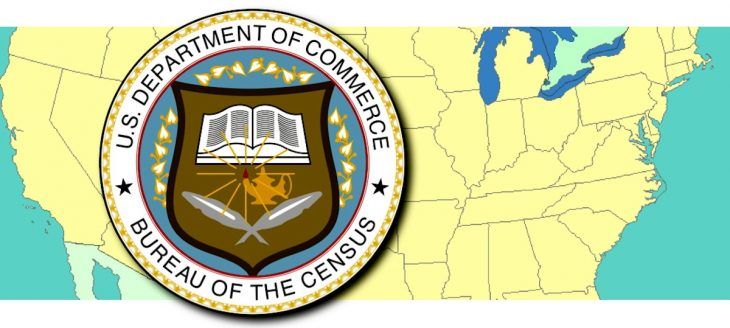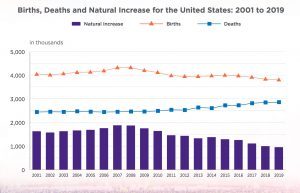Arkansas population up 3.5% between 2010 and 2019
by December 30, 2019 4:49 pm 2,228 views

Arkansas’ population grew 3.5% between 2010 and July 1, 2019, according to estimates released Monday (Dec. 30) by the U.S. Census Bureau. The report shows the state added 101,773 new residents in the period.
State population was 2,916,031 on April 1, 2010, following the last census. The 2019 Arkansas population estimate – as of July 1 – was 3,017,804.
U.S. population has grown 6.3% between 2010 and 2019, rising from 308.758 million to 328.239 million.
The nation’s population was 328,239,523 in 2019, growing by 0.5% between 2018 and 2019, or 1,552,022 people. Annual growth peaked at 0.73% this decade in the period between 2014 and 2015. The growth between 2018 and 2019 is a continuation of a multiyear slowdown since that period.
Arkansas’ population grew 0.27% between July 1, 2018 and July 1, 2019, an addition of 8,071 residents.
BIRTH, DEATH CHANGES
The U.S. Census Bureau’s national and state population estimates show 42 states and the District of Columbia had fewer births in 2019 than 2018, while eight states saw a birth increase. With fewer births in recent years and the number of deaths increasing, natural increase (or births minus deaths) has declined steadily over the past decade.
“While natural increase is the biggest contributor to the U.S. population increase, it has been slowing over the last five years,” Dr. Sandra Johnson, a demographer/statistician in the Population Division of the Census Bureau, noted in the statement. “Natural increase, or when the number of births is greater than the number of deaths, dropped below 1 million in 2019 for the first time in decades.”
 Estimates for Arkansas show 351,712 births and 285,024 deaths between 2010 and 2019. The estimates also show net migration of 34,584 in the period, with 23,180 listed as international migration and 11,404 as domestic migration.
Estimates for Arkansas show 351,712 births and 285,024 deaths between 2010 and 2019. The estimates also show net migration of 34,584 in the period, with 23,180 listed as international migration and 11,404 as domestic migration.
The U.S. Census Bureau projects the U.S. population will be 330,222,422 on Jan. 1, 2020, an increase of 1,991,085, or 0.61%, from New Year’s Day 2019. Since Census Day (April 1) 2010, the population has grown by 21,476,884 or 6.96%. The projected world population on Jan. 1, 2020, is 7,621,018,958, an increase of 77,684,873, or 1.03%, from New Year’s Day 2019. During January 2020, 4.3 births and 1.9 deaths are expected worldwide every second.
REGIONAL YEAR-OVER-YEAR GROWTH
The South, the largest of the four regions with a population of 125,580,448 in 2019, saw the largest numeric growth (1,011,015) and percentage growth (0.8%) between 2018 and 2019. This growth is driven mainly by natural increase (359,114) and net domestic migration (407,913), which is the movement of people from one area to another within the United States.
The Northeast region, the smallest of the four regions with a population of 55,982,803 in 2019, saw population decrease for the first time this decade, declining by 63,817 or -0.1%. This decline was due to net domestic migration (-294,331), which offset population gains from natural increase (97,152) and net international migration (134,145), or the difference between the number of people moving into the country and out of the country.
Forty states and the District of Columbia saw population increases between 2018 and 2019. Ten states lost population between 2018 and 2019, four of which had losses over 10,000 people. The 10 states that lost population were New York (-76,790; -0.4%), Illinois (-51,250; -0.4%), West Virginia (-12,144; -0.7%), Louisiana (-10,896; -0.2%), Connecticut (-6,233; -0.2%), Mississippi (-4,871; -0.2%), Hawaii (-4,721; -0.3%), New Jersey (-3,835; 0.0%), Alaska (-3,594; -0.5%), and Vermont (-369 ; -0.1%).
Nine states had a population of over 10 million in 2019. Those states were California (39,512,223), Texas (28,995,881), Florida (21,477,737), New York (19,453,561), Pennsylvania (12,801,989), Illinois (12,671,821), Ohio (11,689,100), Georgia (10,617,423) and North Carolina (10,488,084).
